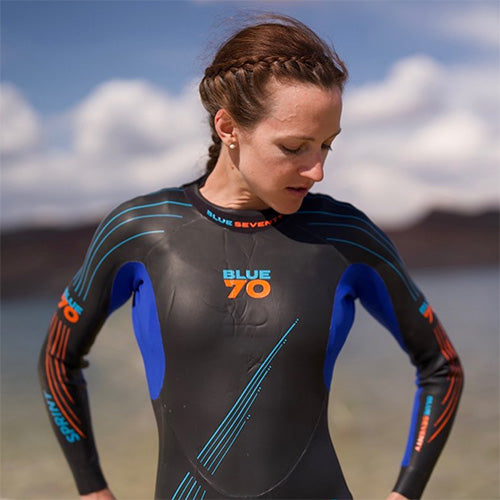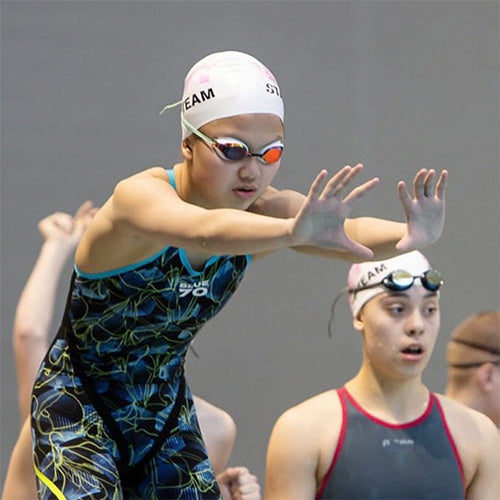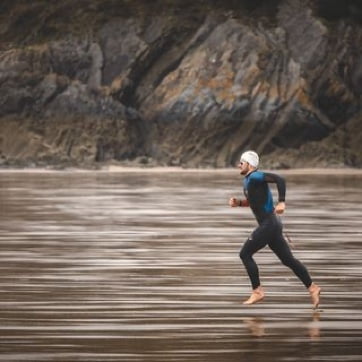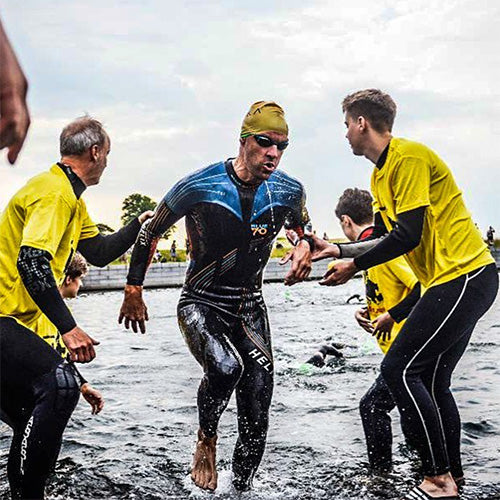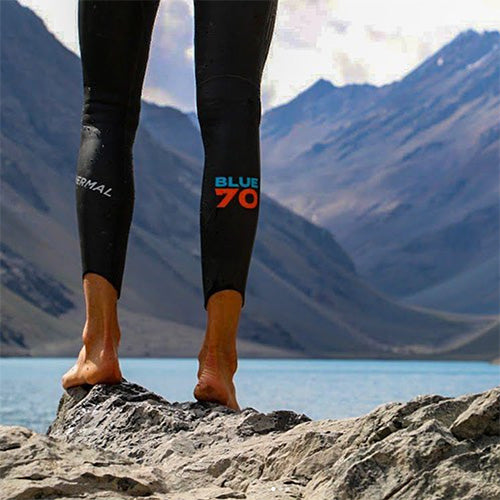Five Moves to Fix Your Swimmer's Shoulder Injury
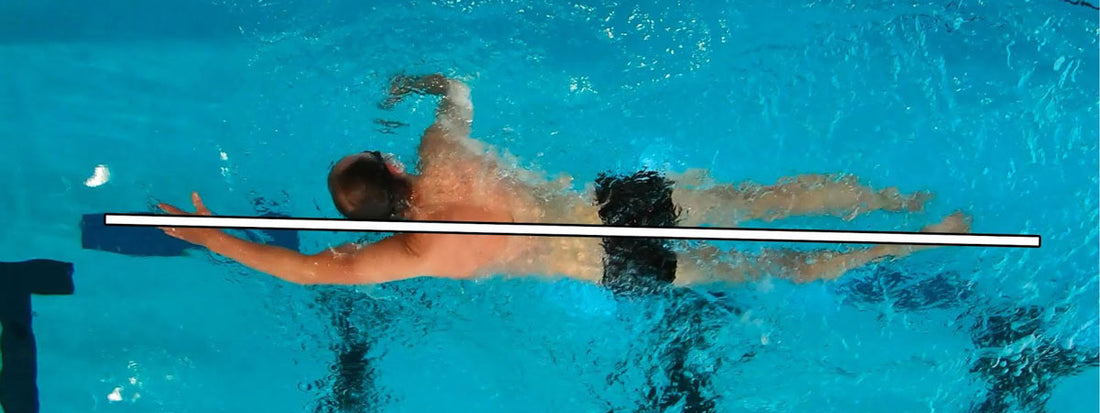
- Chris Bagg (Chris Bagg Coaching Group)
“Who in here has shoulder pain? What? Not a single arm went up. That’s remarkable. A room full of swimmers and not one…oh, what? What’d you just say? Oh, none of you can raise your hands because of your shoulders. Ah, I get it. OK, I’m in the right room, then. Let’s begin.”
I may be exaggerating, imagining the above scenario, but just yesterday one of my swimmers climbed out of the pool, clutching the front head of his rotator cuff. “You doing OK?” I asked. “Shoulder,” he muttered back. “It’s bugging me again.” “You doing your PT?” I inquired. “PT, massage, acupuncture…” he began and then trailed off, frustration evident in his eyes, an athlete who felt he’d exhausted all his options.
Who hasn’t been in this spot before? Trying to do the thing you love to do, only to be stopped short by an injury, and then not released back to full activity even though you’ve done what you thought was necessary to fix the problem? I know I’ve been there, many times, for many different joints in my body. And I don’t claim to have all the answers, but I’m here today to share how I fixed my swimmers’ shoulder in less than ten minutes a day. But first—a brief anatomy lesson.
Your Problem is Most Likely Scapular Stability
Our bodies are composed of a series of joints that operate together to create movement. Obviously, they all need to move (a joint that doesn’t move isn’t a joint, after all), but some need to move more and some need to move a little less. Those joints that move more we’re going to refer to “mobile” joints, and the ones that move less we’ll call “stable” joints.
Starting from the top of your body, your shoulder joint needs to be mobile—it has to move in many different planes and accomplish a lot of tasks. Retreating towards the center of the body, we arrive at the scapulae. These need to be stable—they provide a solid foundation to the shoulder joint, allowing it to be mobile. Continuing down the body, you’ll find an alternating pattern of stability and mobility: thoracic spine, mobile; lumbar spine, stable; hips, mobile; knee, stable; ankle, mobile; metatarsals, stable.
If any of these joints can’t perform their job, you will have issues (anyone have unstable knees? You know how problematic that can be). This alternating pattern is important in the way that having one fixed axel in your car is important: if both are mobile, you need to control (steer) both axels, and our cars aren’t designed to work that way. The rear axel provides stability, while the front axel gives our cars the mobility necessary to drive in a modern world. The same is true of the shoulder region: the scapulae need to be stable to allow the shoulders to move as they need to. If the scapulae aren’t stable, the shoulder joint compensates, and that’s where you run into injury. So, how do we fix this?
Strengthen and Stabilize the Scapulae
How many times did your mom or dad tell you to stand up straight? Well, you shoulda listened. Here’s what has happened, in the intervening years: by slumping forward all the time at your desk, you’ve allowed your shoulders to adopt an internally rotated position (turned in), and the muscle that runs down from your shoulder to your breastbone (on the “anterior” or front of your body) has shortened. Everything is out of place, now, due to that shortening and slumping, and rotational forces (i.e.: swimming) end up in the shoulder, rather than the larger muscles of the upper back, where they’re supposed to be. Ever wonder why backstrokers walk around with perfect, elegant postures? No? Huh, well, I do. Anyway, it’s because their sport keeps that muscle from shoulder to breastbone (the pectoralis minor) long and strong. Freestylers, on the other hand, often look like The Hunchback of Notre Dame. Not good in the long term. We can fix this through Banded Arm Pull-Aparts and Banded Arm Circles, detailed at the end of this section. The goal of these movements is to strengthen the muscles that stabilize the scapulae, which provides the necessary foundation for your shoulder to be mobile.
Allow the Shoulder to Move Properly Again
As we just talked about, your pectoralis minor has probably shortened, and now tugs your whole shoulder complex down and forward, internally rotating the joint and placing too much stress on the head of the rotator cuff. For you to swim pain-free, we need to lengthen that pectoralis minor again, allowing the shoulder to sit in its proper location. We’ll use the Pectoralis Minor Lacrosse Ball Release and Doorframe PAILs/RAILs to achieve that release, detailed at the end of this section.
Mobilize the Thoracic Spine
Remember that whole thing about mobile and stable? Well, moving down the body from your scapulae (which need to be stable) we arrive at your thoracic spine, the ignored sibling to the lumbar spine, which is farther down and where people’s issues tend to manifest. A lifetime of sitting at a desk has frozen your thoracic spine, the “middle back,” and for everything to work properly we have to get that moving again. We’re going to do an exercise called John Travoltas on a Peanut (fun, right?) to address the problem.
Fix the Technique Issues
And then we need to address the technique problems that got you here in the first place! This should be an easy sell, since not only will it assist with the shoulder issues, it will also make you a faster swimmer. The three issues we’re most likely to see causing shoulder pain are:
-
Unilateral breathing leading to movement dysfunction on the non-breathing side (too much rotation).
-
Pressing down at the front end of the catch
-
Crossing over the centerline of the body at the front of the stroke.
It is presently beyond the scope of this article to address these technique issues, but have a look at the pictures from Swim Smooth associated with each fault below, and then have someone shoot a little video of you swimming. Do you do the same things?
Unilateral breather with too much rotation:
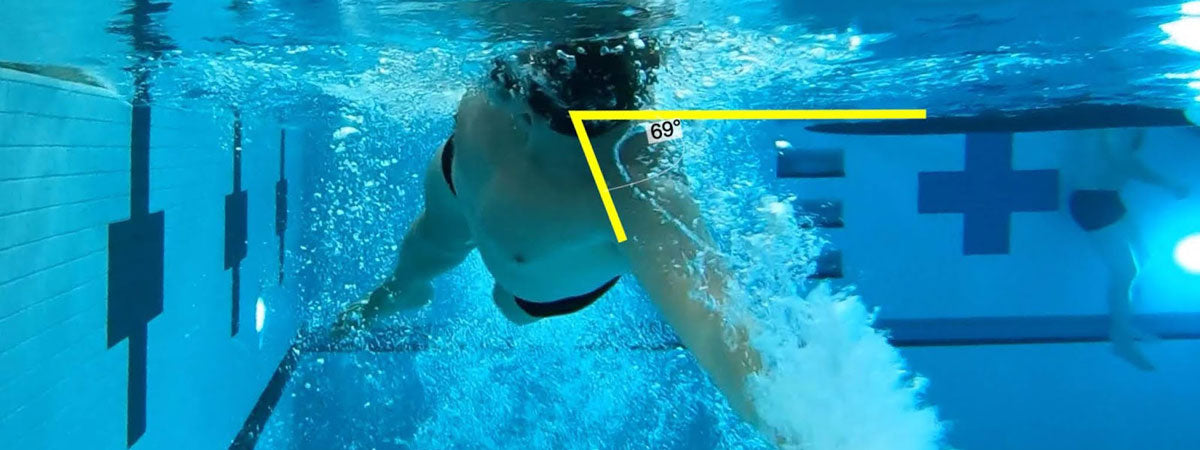
A proper degree of rotation would be 45º, this swimmer displays too much rotation.
Swimmer Pressing Down at Front of Catch:

Crossover at the front of the stroke:
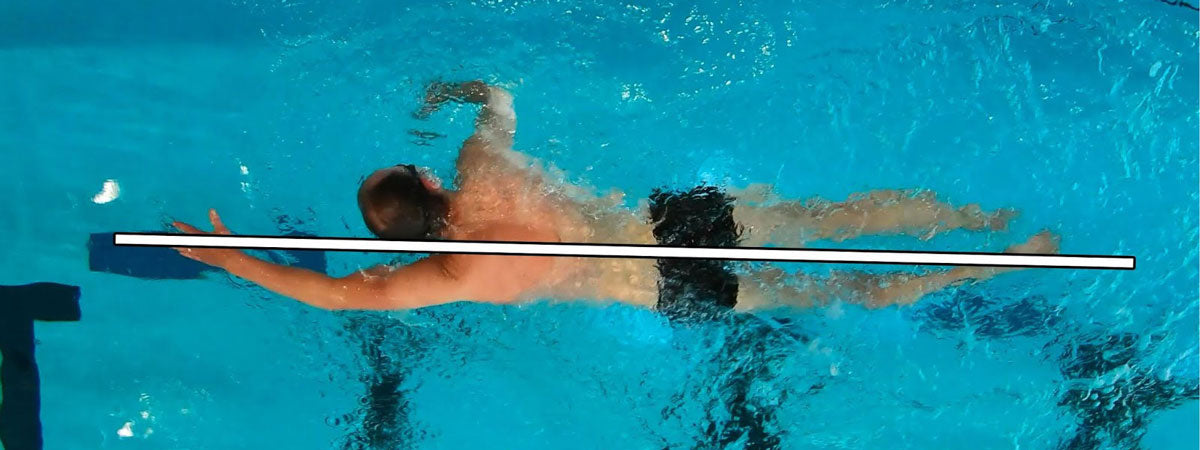
The Routine
Finally! This guy talks so much!
Banded Arm Pull Aparts
Hold a TheraBand or stretch cord in both hands, palms facing the ceiling, about waist high, arms straight and shoulder-width apart. Keep your elbows locked and raise your arms until they are just below your shoulders. Pull the band ends in opposite directions until your arms are spread wide, then release back to starting position (exercise and text courtesy of Jay DiCharry, Running Rewired).
Do One set of 20 repetitions; increase to 25 and then 30 once 20 is easy.
Banded Arm Circles
Stand feet shoulder-width apart, holding a TheraBand or stretch cord in both hands about waist level with palms facing forward/up. Pull the band ends in opposite directions to place some tension on the band—you’ll probably end up with hands 10-12 inches wider than your shoulders. Keep your elbows locked as you reach overhead, then behind your body with the band, then back to the starting position (exercise and text courtesy of Jay Dicharry, Running Rewired).
Do one set of 20 repetitions.
Pectoralis Minor Lacrosse Ball Release
Take a lacrosse ball, and place it in the “notch” between the ball of your shoulder and pectoralis muscle, on the front of the body. Now lean against a wall or doorframe, trapping the ball between your body and that vertical surface. Apply a fair amount of pressure to the ball, and then move the arm on the ball side of the body (i.e.: if you’ve trapped the ball below your left shoulder, move your left arm) as if you were making a snow angel: slowly raise it, keeping it straight, out to your side and then above your body. You will feel the lacrosse ball pinning the pectoralis minor muscle in place, while movement of the arm stretches the tissue. (exercise and video courtesy of Hosmer Chiropractic)
1 minute on affected side
Trigger Point Ball For Pectoral Muscles from Seth Hosmer on Vimeo.
Shoulder External Rotation PAILs/RAILs (Americana Stretch)
Stand next to a dowel that is taller than you are. If you don’t have a dowel of this length, go down to a half-kneel. Making your upper arm perpendicular to the ground, place the dowel along the back of your elbow (so your arm is in front of the dowel), and then wrap your hand behind the dowel, so your forearm is vertical, at a 90 degree angle to your upper arm, with your hand parallel to the dowel. Hinge slightly forward from the hip, isolating a stretch in the posterior (rear) of the shoulder. Stay in the stretch for two minutes, allowing the shoulder tissue to relax into the stretch. Keeping the dowel in place, begin to ramp up a contraction where you push your palm into the dowel, ramping from nothing to 100%. Hold that contraction for another 15 seconds. Then, try to lift the palm away from the dowel, as if you were trying to rotate the arm behind you. Hold that contraction for 30 seconds. Finally, let that contraction go and return to your original passive stretch, seeing if you’ve deepened the stretch at all.
3 minutes on affected side
John Travoltas on a Peanut
Lie down on your back. Place the peanut at around where you’d wear a heart rate strap, and trap the peanut between your body and the floor. The peanut should be perpendicular to your spine, and you should feel a fair amount of pressure on either side of the spinal column. Hold your arms straight above you, perpendicular to the floor, each holding a five-pound weight. Send one arm towards the floor above your head, while the other arm heads down your body. Alternate the position of the hands ten times on that vertebra. Roll your body down one vertebra, so the peanut moves up your spine. Continue moving the peanut up your spine after each set of ten until you run out of workable vertebrae.
10 reps on each vertebra, starting around “bra/bro strap” region.



